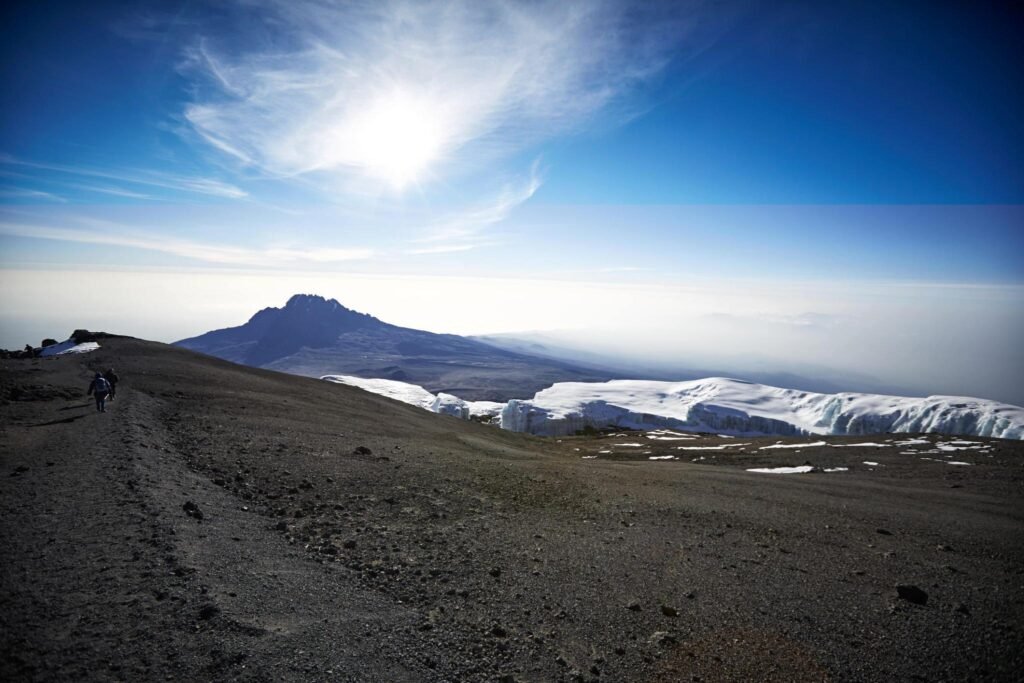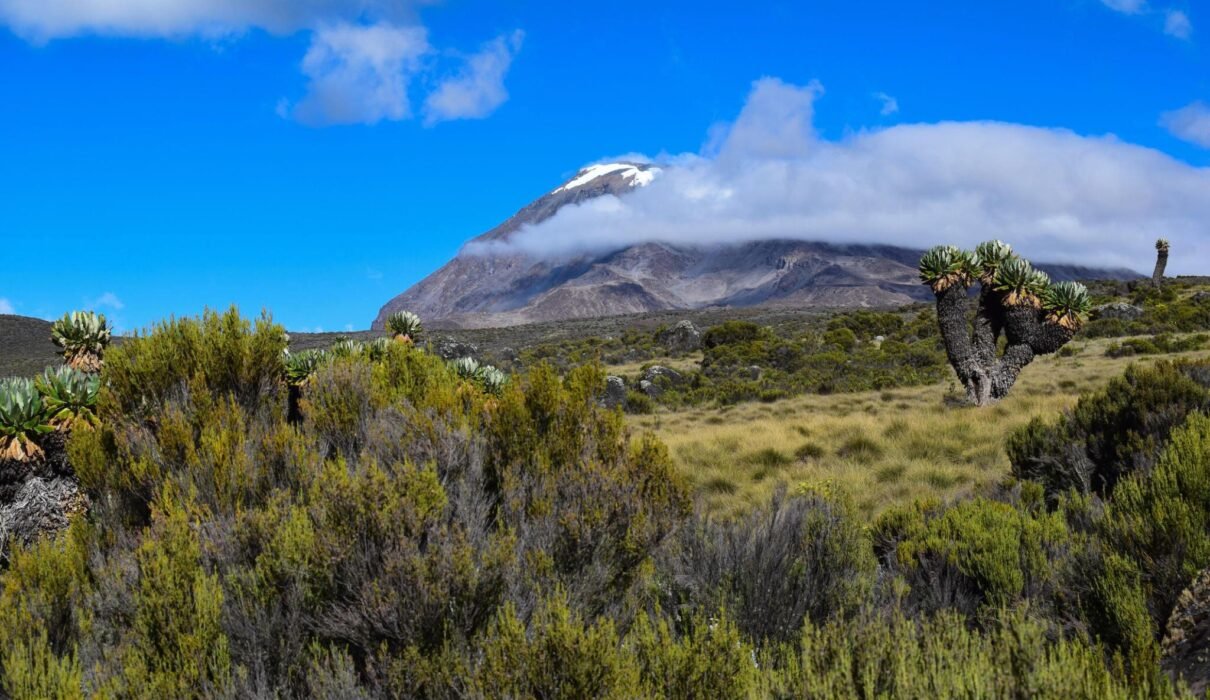10 Things They Dont Tell You About Climbing Kilimanjaro. Climbing Mount Kilimanjaro, the highest peak in Africa, is an exhilarating challenge that many adventurers aspire to conquer. While the trek is known for its stunning views and unique experience, there are aspects of the journey that often go unmentioned. Whether it’s the mental challenges, unexpected weather, or effects of altitude, there are plenty of things that catch climbers by surprise.
In this article, we reveal 10 things they don’t tell you about climbing Kilimanjaro, so you can be fully prepared for what lies ahead.

10 Things They Dont Tell You About Climbing Kilimanjaro : Altitude Will Affect You, Even if You’re Fit
No matter how physically fit you are, altitude sickness is the great equalizer on Kilimanjaro. The air gets thinner as you ascend, and the lack of oxygen can hit even the fittest hikers.
What to Expect:
- Altitude Symptoms: Headaches, nausea, shortness of breath, and dizziness are common symptoms at high elevations.
- No Predictability: Fitness doesn’t prevent altitude sickness. You could be in top shape but still suffer from altitude effects, while someone less fit has no issues.
Acclimatization is key to mitigating these symptoms, so choose a longer route and ascend slowly to give your body time to adjust.
Learn more about altitude sickness on Kilimanjaro
10 Things They Dont Tell You About Climbing Kilimanjaro : Summit Night is Brutally Cold
The trek to the summit begins in the middle of the night when temperatures can drop well below freezing. This night is notoriously difficult, both physically and mentally.
What You Need:
- Warm Gear: A high-quality down jacket, thermal layers, gloves, and a hat are essential to keep you warm.
- Mental Toughness: The cold, exhaustion, and altitude make summit night a mental battle as much as a physical one.
Despite the freezing conditions, the reward of watching the sunrise from the summit is worth every shivering moment.
Check out a Kilimanjaro gear list
10 Things They Dont Tell You About Climbing Kilimanjaro : You Might Lose Your Appetite
As you ascend higher, it’s common to lose your appetite due to the effects of altitude. This can be problematic since you need to consume plenty of calories to keep your energy levels up.
Tips to Combat Loss of Appetite:
- Eat Small, Frequent Meals: Even if you don’t feel hungry, try to eat small portions of food regularly to maintain energy.
- Bring Snacks: Pack high-calorie snacks like energy bars, nuts, and dried fruit that are easy to eat on the go.
Your guides will prepare hearty meals, but bringing your own snacks ensures you have something you can stomach when your appetite dips.
Learn more about staying fueled on Kilimanjaro
10 Things They Dont Tell You About Climbing Kilimanjaro : The Descent Can Be Harder Than the Ascent
While reaching the summit is a huge achievement, the descent can be surprisingly tough. After days of ascending, your muscles will be fatigued, and going downhill can be harder on your knees and joints.
What to Expect:
- Steep Descent: The descent from Uhuru Peak is steep and requires careful navigation, especially on loose scree.
- Knee Pain: Many trekkers experience knee pain during the descent due to the constant downhill strain.
Consider using trekking poles to reduce pressure on your knees and help maintain balance on the loose rocks.
Explore tips for descending Kilimanjaro
10 Things They Dont Tell You About Climbing Kilimanjaro : The Weather is Unpredictable
Kilimanjaro’s climate zones range from tropical rainforests to arctic conditions at the summit, and the weather can change dramatically over the course of a day.
Be Prepared for:
- Rain: Even during the dry season, rain is common in the rainforest zone.
- Extreme Cold: The higher you go, the colder it gets. It can be freezing at night, even when it’s warm at lower altitudes.
- Wind: Strong winds are common on the summit, adding to the challenge.
Pack for all types of weather, including rain gear and warm layers, even if you’re trekking during the dry season.
Learn more about Kilimanjaro weather
10 Things They Dont Tell You About Climbing Kilimanjaro : Mental Strength is Just as Important as Physical Strength
While physical fitness is essential, mental resilience plays a huge role in reaching the summit. The altitude, cold, and long days of trekking can take a toll on your mindset.
How to Build Mental Toughness:
- Set Small Goals: Focus on reaching the next campsite or the next break rather than thinking about the entire trek.
- Stay Positive: Surround yourself with positive thoughts and encouraging teammates to keep spirits high.
- Visualize Success: Picture yourself standing at the summit to stay motivated during the tough moments.
Your mindset can make or break your summit attempt, so prepare mentally as well as physically.
Learn more about mental preparation for Kilimanjaro
10 Things They Dont Tell You About Climbing Kilimanjaro : It’s Not Just About Reaching the Summit
While the summit is the ultimate goal, the journey up Kilimanjaro is just as rewarding. The varied landscapes, wildlife, and camaraderie with your trekking group make the experience unforgettable.
Other Highlights:
- Stunning Scenery: From lush rainforests to volcanic craters, the diverse landscapes are breathtaking.
- Wildlife Encounters: You may spot colobus monkeys in the rainforest zone or birds of prey soaring above the alpine desert.
- Cultural Exchange: Interacting with your local guides and porters offers insight into Tanzanian culture and traditions.
Appreciating these moments along the way makes the entire journey richer and more meaningful.
Explore the beauty of Kilimanjaro’s landscapes
10 Things They Dont Tell You About Climbing Kilimanjaro : Tipping is Part of the Culture
Tipping your guides, porters, and cooks is an expected part of the Kilimanjaro experience. These hardworking individuals are essential to your trek’s success, and tipping is a way to show your appreciation.
Tipping Guidelines:
- Guides: Around $15-20 per day per guide.
- Porters: Around $5-10 per day per porter.
- Cooks: Around $10-15 per day for the cook.
It’s customary to tip at the end of the trek, and most groups pool their tips to distribute fairly among the staff.
Learn more about tipping etiquette on Kilimanjaro
10 Things They Dont Tell You About Climbing Kilimanjaro : Expect to Get Dusty
Kilimanjaro’s trails, especially in the alpine desert and summit zones, can be incredibly dusty. The volcanic ash and dry conditions mean that you and your gear will likely be covered in dust by the end of each day.
How to Cope:
- Bring a Buff or Bandana: Use it to cover your mouth and nose to prevent inhaling dust.
- Pack Wet Wipes: Since showers aren’t available on the mountain, wet wipes are essential for staying fresh.
- Protect Your Gear: Use waterproof bags or covers to keep dust out of your clothing and equipment.
The dust can be annoying, but with a few precautions, you can minimize its impact.
Discover more trekking tips for Kilimanjaro
10 Things They Dont Tell You About Climbing Kilimanjaro : You’ll Need to Hydrate More Than You Think
Staying hydrated is critical to both your performance and your ability to acclimatize to the altitude. Dehydration can exacerbate the symptoms of altitude sickness, so you need to drink more water than you might on a normal hike.
Hydration Tips:
- Drink 3-4 Liters a Day: Make sure you drink regularly, even if you don’t feel thirsty.
- Use a Hydration Bladder: This makes it easier to sip water frequently without stopping to take off your pack.
- Add Electrolytes: Electrolyte tablets can help replace salts lost through sweat, especially on hot days.
By staying hydrated, you’ll reduce the risk of altitude sickness and keep your energy levels up throughout the trek.
Learn more about hydration strategies for high-altitude treks
10 Things They Dont Tell You About Climbing Kilimanjaro : Conclusion
Climbing Mount Kilimanjaro is a challenge that requires more than just physical fitness. From altitude sickness to extreme weather, there are many factors that climbers need to prepare for. By understanding these often-overlooked aspects of the climb, you’ll be better equipped to make it to the summit and enjoy the journey along the way.
Start planning your Kilimanjaro adventure with Kilimanjaro Climb Specialist
Book your next Kilimanjaro trek with Eddy Tours Safaris

